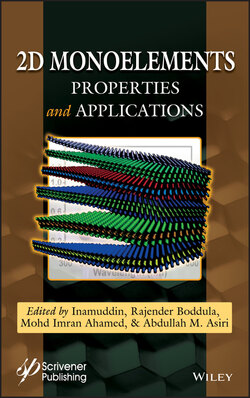Читать книгу 2D Monoelements - Группа авторов - Страница 37
1.3.3.3 Thermal Conductivity
ОглавлениеCompared with pure phosphorene (P), phosphorene oxide (PO) exhibits a much lower thermal conductivity over the whole temperature range [87]. Indeed, the values of the thermal conductivityfor both P and PO along the armchair axis, namely and are 2.5 times smaller than and along the zigzag one. At room temperature T = 300 K, the takes the value of 2.42 W/mK, which is very small compared to 65 W/mK reported for pure phosphorene as well as that of other 2D materials such as silicene (26 W/mK) [88] and MoS2 (34.5 W/mK) [89]. Low thermal conductivity renders PO an advantageous novel low dimensional candidate for high-performance thermoelectric materials [87].
To highlight the main responsible of such a low lattice thermal conductivity in PO, one should examine the various phonon modes. The puckered structure of PO allows more phonon-phonon scattering of the ZA mode with a contribution of 15% to 17%, while the longitudinal and transverse acoustic modes are the most dominant ones. Furthermore, the lattice thermal conductivity in a material results on the use of different phonon scattering sources. For the case of PO, only the phonon-phonon scattering is considered, since the other sources, such as Umklapp scattering, phonon-electron scattering, impurity effect and boundary effect are so negligible. As shown in Figure 1.17, the anharmonic relaxation times of as a function of frequency indicates that the phonon lifetime corresponding to three acoustic modes (ZA, TA, and LA) and the other higher modes of PO is more lower than that of pure phosphorene. This reduction is mainly owing to dangling bond connecting oxygen atom to its phosphorous neighbor which allow to O not only in the optical P-O vibration, but also vibrate along the in-plane directions together with phosphorous atoms contributing to the acoustic modes. It follows that this contribution is responsible for the acoustic phonon softening which decreases the thermal conductivity of PO [87].
Figure 1.17 Mode-dependent anharmonic phonon relaxation time for acoustic modes.
